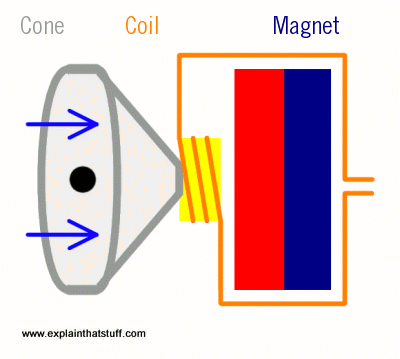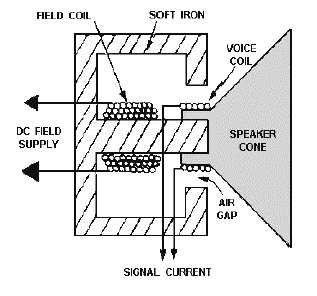The Science of Microphones and Speakers: How they achieve it

Season greetings to all steemians. Holidays come and go but I hope this one in particular is memorable for you all. Enjoy it with your family and friends for they are all we've got.
Am sure we all know them, am referring to microphones, we use them at some point in our lives - while addressing an audience in a talk show, while recording our latest songs, they are there even in our phones enabling us make calls and other stuffs
But how do they achieve it?
Why bother know this? I don't know for you but am keen on knowing for sure how they work; probably because I am a researcher, I just love to know stuff. Want to know how they work too? Join me as I take this ride.
Hey, why not fasten your seat belts?
Microphones in the ordinary are made up of the handle and at the top that cool metal with holes around it with a wire attached at the bottom for some. But it's what's on the inside that gives them that ability to do what they do.
What a minute. It's like I am lost. What do microphones really do?
Microphones work like transducers; they convert energy from one form to another, but in this case from sound energy to electrical energy.
This whole article will revolve around how microphones achieve this.
A microphone is basically made up of a diaphragm attached to a coil wound around a conductor surrounded by a magnetic field produced by a magnet.

Whereas a speaker is made up of an electromagnet - coil wound around a soft iron and a diaphragm placed above the electromagnet.
When we speak into the microphone, the sound waves we produce travel into the diaphragm, causing the diaphragm to vibrate, the vibration of the diaphragm in turn cause the coil to move in the magnetic field.
And from electromagnetism we know that whenever a conductor cuts a magnetic field, voltage is induced in that conductor. Therefore, the movement of the coil in the magnetic field induces voltage, causing current to flow(electric signal) .
So simple I guess. You mean that's all? No it can't be... Are you saying that if anybody grabs a mic speaks into it it converts from sound to electric signal and through the speaker converts the electric signal back to sound? There has to be more. Why do peoples voice come out distinct from the speaker. I mean why does one person voice differ from the other person, if it's just about movement of the coil in the magnetic field shouldn't we hear the same sound
Okay Okay. I get it. You are right there seems to be more. First and foremost it is important we understand what makes our voice distinct from another person's voice. The sound waves we generate when we speak are characterized by their frequency, speed, wavelength.
Each sound has distinct frequency, speed, wavelength and the mic just mimics this. The diaphragm is what's actually responsible for this, the diaphragm vibrates, to and fro, in accordance with the sound wave - its frequency, speed and wavelength. Reproducing in the electrical form the exact replica of the sound.

The electric signal (current) produced in the wire alternates in accordance with the movement of the coil in the field. The frequency, speed, wavelength of the alternating electric signal is dependent on that of the sound.
If we were to listen to the sound through a speaker what we would hear is the exact replica of the sound. The electric signal traveling through the wire turns on or off the electromagnet because it is alternating - you know, changing direction.
The alternating electric signal flowing through the wire varies the magnetic field produced, thus varying the push-pull effect of the magnet on the diaphragm. The vibration of the diaphragm results in the vibration of the surrounding air producing the required sound.

But the sound produced just like the electric signal is dependent on the frequency, wavelength and speed of the wave or signal fed.
Conclusion
How microphones work is much more complex than what's explained above, why? because we have to eliminate surrounding noise from the sound using filters. Sometimes the electric signal produced from the microphone is poor and we may need to amplify it using amplifiers.
There are is so much more to consider for our microphones to work effectively. But the basic working principle of microphones is as well very much important. And I hope we've learnt a lot, refreshed those forgotten memories and grasped new information.
Reference:
Image Credit:
- Image 1 from pixabay.com
- Image 2 and 4 from ProducerSpot
- Image 3 from Explain that Stuff

@originalworks
The @OriginalWorks bot has determined this post by @kenadis to be original material and upvoted it!
To call @OriginalWorks, simply reply to any post with @originalworks or !originalworks in your message!
Congratulations @kenadis! You have completed some achievement on Steemit and have been rewarded with new badge(s) :
Click on any badge to view your own Board of Honor on SteemitBoard.
For more information about SteemitBoard, click here
If you no longer want to receive notifications, reply to this comment with the word
STOP